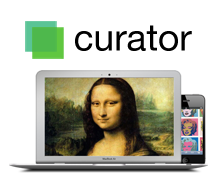What makes a museum website great is the user experience ("UX")

Not too long ago I came across a blog post that listed what the author considered the "Top Ten Museum websites". Included among them was a site that had a home page displaying solely a Flash pattern of ripples and swirls and that moaned a baleful sound that looped and continued indefinitely. No information on events, exhibitions, hours of operation, directions, nor any promotions to tease you further into the site. Nothing. And of course the Flash did not load onto iPads or other iOS devices, meaning roughly 1 in 4 visitors to the home page couldn't see the bubbling imagery that someone at the museum was evidently so proud to show off.
Several other sites on the list didn't have user-friendly mobile versions of their sites, or had home pages that were completely unlike the rest of the site, which can be disorienting.
These are the top ten museum websites? Let's discuss what really makes a museum website great.
Think of a museum website as a place, like a gallery, a botanical garden or an archive. It's an architectural structure that contains things, whether examples of great art, flowers or historical records.
The museum's buildings are not the exhibits - they contain the exhibits. The same is true for its website. The museum website should not be a fancy, thought-provoking digital exhibit. It should contain them.
To put up an inscrutable splash page with no other information is like putting an exhibit people didn't come to see outside the front door and forcing them to view it before they can enter.
Would you want to do that to your patrons? If you did, think about what would happen to donations and memberships.
Usability guru Don Norman, in his book The Design of Everyday Things, talks about two new public buildings, one built in Seattle and one in Los Angeles. One was easy to use (I forget which) and the other won a design award. Trouble was, people were always getting trapped between the double doors of the award-winning building. They couldn't figure out how to use the newfangled doors. Better to focus on ease of use than winning prizes.
For a good visitor experience, museum facilities need doors, windows, good lighting, air conditioning, solid flooring and wheelchair-accessible ramps, among many other things.
For a good user experience ("UX"), museum websites need, among other things:
- clear, consistent navigation (same spot on every page), that addresses the needs of digital visitors and answers their basic questions
- user interfaces that are optimized for several device types, including smartphones, tablets and laptops/desktops
- content that is easy to read and easily "scannable"
- pages that render quickly
- content that's easily accessible to the visually and physically impaired, who use special software to find their way around a site
A good user experience is vital to the success of a museum website and the institution it serves. If a website is difficult to use, people leave. If a homepage doesn't clearly tell people what events or exhibitions are taking place, where to park, what's special about the museum, or allow them to quickly make a donation, they will leave. If the essential information is hard to read - or find! - they will leave.
So why are so many museum websites that are considered "top" examples so poorly designed? I think it has to do with culture.
In the museum world, there is an irresistable urge to present things in a new, different and thought-provoking way. Most curators, rightly, believe they have a more learned perspective on items in a collection and their job is to edify their audiences, rather than dumb things down.
Both of these sensibilities are good things, but they are not a good way to approach the design of a website. The overall architecture of a site should be utilitarian and indeed, a good interface should fade away and become invisible.
As Norman would say, get people where they'd like to go - don't focus on winning a design award.
When someone is using your website to figure out what time the guided tour is taking place, one thing you don't want to do is be thought-provoking. If you don't believe me, please read this book.
Let me quickly add that I'm not saying digital exhibits or apps shouldn't be thought-provoking or shouldn't cause people to look at things in a new way. It's just that the overall site structure shouldn't be hard to figure out.
Done right, a great museum website will be an artistic resource and a unique, creative, interactive space that provides a pleasant user experience and helps a museum connect with new audiences and strengthen ties to old ones.

